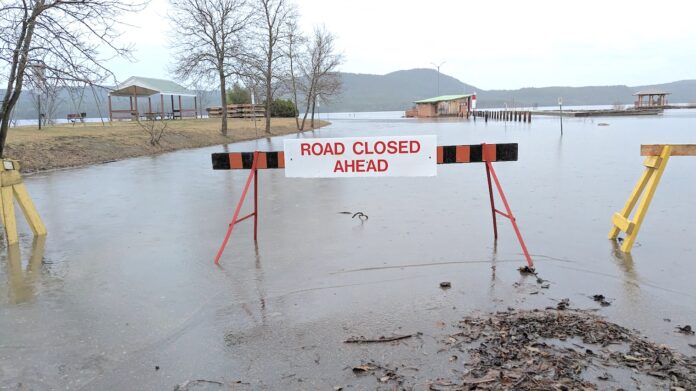Ontario’s Ministry of Natural Resources and Forestry and the Ottawa River regulating agency are both warning that heavy rainfall expected Sunday night and Monday may raise river levels beyond the “minor flood” levels in the area from Rapides des Joachims to Pembroke.
In its latest update Friday, the MNRF said rain over the weekend and into early next week was expected to raise Ottawa River levels to “major flood levels” in areas from Westmeath down to Arnprior.
The Ottawa River Regulation Planning Board, meanwhile, said areas around Mattawa and Pembroke could see “minor flooding.”
“Should the weather systems bring precipitation amounts much higher than forecasted, levels may reach the major flood threshold,” the agency said.
The MNRF said river levels would remain “well below” the historic highs reached during the spring floods of 2019.
However, “residents that have been affected by high water and flow conditions in the past should take necessary action to protect/secure any vulnerable property in proximity to rivers and lakes and closely monitor developing conditions and regularly check for updated messages,” the Ministry said.
As of Sunday, the river regulation board was reporting river levels of 112.82 metres above sea level at Pembroke.
They are forecast to reach 113.05 m by Tuesday, well above the median for this time of year of 112.16 m, but still below the historic high water mark of 113.69 m reached during the 2019 floods.
Above the dam, water levels at Des Joachims were reported at 150.67 m Sunday, below the historic median of 151.14 m for the same date.
But levels have been raised more than a full metre from 149.62 m on April 15.
Water levels above the dam are typically drained in March to prepare for spring flows, before being raised to the normal “summer level” of approximately 152.1 m in May.
During a public meeting in Pembroke following the disastrous floods in 2019, officials from Ontario Power Generation (OPG) and the ORRPB were asked why more water wasn’t held at Des Joachims to prevent worse flooding downstream.
But Michael Sarich, senior water resources engineer for the ORRPB, said the power dams OPG manages along the river are “run of the river” dams that do not have any significant impact, including Des Joachims.
Sarich said the amount of water flowing through the generating station during the 2019 runoff was 52 times larger than what could possibly have been stored above the dam.
“For us, that’s absolutely inconsequential,” he said.
Raising levels at Des Joachims would only have made flooding at Mattawa worse, he added.
OPG technical officer Don Ferko seconded that motion, saying water levels at Mattawa would have been 40-50 cm higher if the river had been brought up to “summer levels” at Des Joachims.
“It’s a pretty well documented relationship,” he said.
“We know how high we can go with that facility and what the impact will be at Mattawa.”
Ultimately, Ferko added, Des Joachims “doesn’t have the storage capacity to prevent flooding downstream and it will never have it.”
But those explanations did not sit well with many in the audience who came forward to ask questions.
Former Deep River Councillor Bob McLaren said he has never seen anything like the river levels this spring in the 40 years that he has lived in Deep River.
“I look at OPG and I blame them,” he said.
McLaren said he never noticed “any significant lowering” of the river prior to the spring runoff, while above the dam at Deux Rivieres, conditions were “bone dry.”
McLaren said water may have been held back at Lake Timiskaming but then was “dumped” all at once.
“In our area, the river went up two feet. That wasn’t from rain,” he said.
“You can’t convince me, or anyone in this room, that you are managing this river to the best of your ability,” McLaren said to cheers from the crowd.
But Shaun Hinds, vice-president of Eastern operations for OPG, said water was never “dumped” from Lake Timiskaming.
Once the control dam at the foot of the lake reached its capacity, water was allowed to flow through to prevent the dam from being breached.
“Reservoirs don’t rise and fall (during the spring),” he said.
“Once they’re full, they’re full.”
“I assure you, if anything could have been done (to prevent flooding), it would have been done,” Hinds added.
- For more local news, pick up a copy of this week’s NRT. To get the NRT delivered directly to your mail box or inbox each week, subscribe here.


